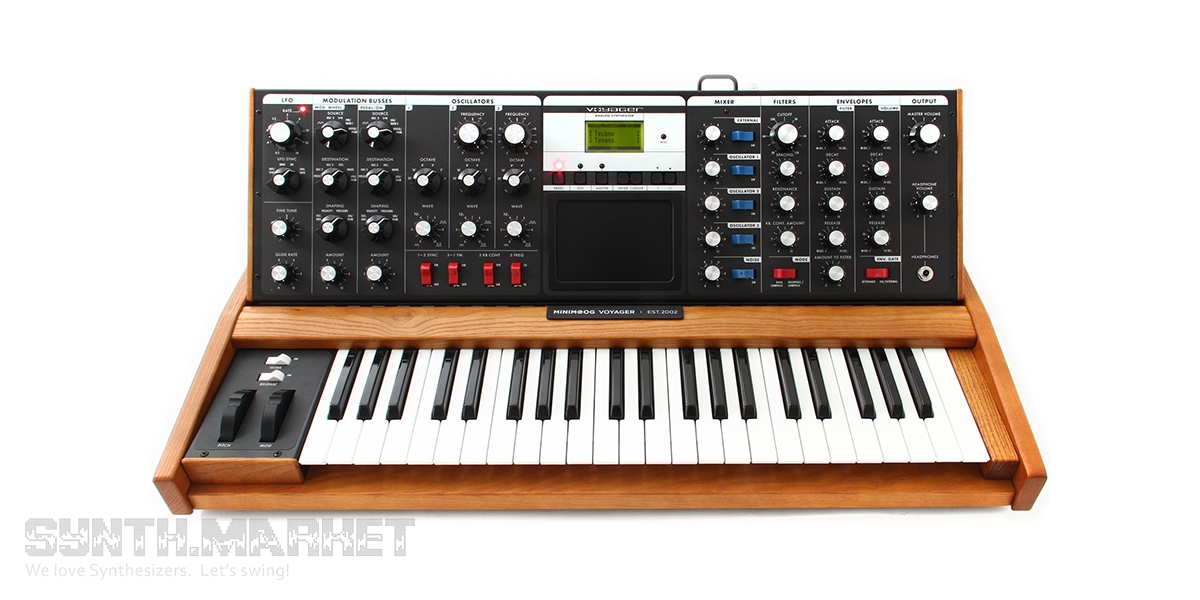This is a successful attempt to remind the world of what an analog synthesizer is. It appeared in 2002, when Dr. Robert Moog finally won the rights to his company (Moog Music) back.
The signal path remained completely analog and schematically very close to the original Model D. Minor changes were made to eliminate undesirable changes in pitch (pitch drift), which all analog synthesizers featuring VCO fall prey to.
As for the "legacy" Voyager got:
Three analog voltage-controlled oscillators with wave shape.
Classic low-pass resonant filter with the possibility of modulation by different sources.
Analog voltage controlled amplifier with ADSR-envelope generator.
An individual envelope generator for VCF with attack, release, after-sound and pedestal time control.
A low-frequency generator with a waveform selection.
New options:
Settings of all knobs and switches can be saved in patches. A total of 128 patches are provided (with the updated OS - 896).
The keyboard is velocity sensitive now and features aftertouch.
The common vintage appearance has a striking detail - a touch panel that allows you to control the parameters of the modulation.
Full MIDI compatibility - in, out, thru.
There are also connectors that allow you to build circuits bypassing internal routing, and add external modulation signals, which allows you to get the flexibility of the modular system. The rear panel of the control unit covers a wide range of connectivity features:
CV for VOL, PAN, FILTER, WAVE, PITCH, MOD1 and 2 parameters.
Sync for the LFO control.
Sample&Hold effect possibility.
There’s a break featured in the circuit between the mixer and the controlled filter.
This synthesizer was used by: Madonna, Black Eyed peas, Alicia Keys, Red Hot Chili Peppers, Maroon 5, Nickelback, Dream Theater, The Crystal Method ...
Tags: analog synthesizer












